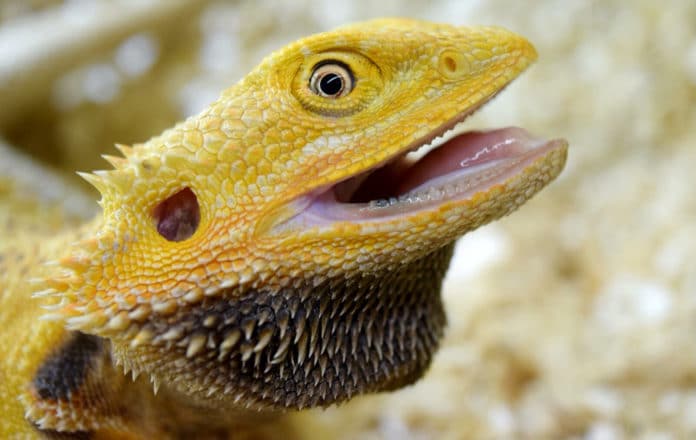Teeth are among the most distinctive features of vertebrates, thanks to their exceptional diversity. Tooth complexity is strongly correlated to dietary habits, life history, or ecological adaptations across species. It also justifies why dental morphological characteristics such as shape and size are commonly used to identify patterns of vertebrate evolution.
Researchers found the first animal example of apparent tooth type changes in specific jaw regions by taking a closer look at lizards.
The results are relevant to multiple research areas, from palaeontology to regenerative medicine.
The HiLIFE Institute of Biotechnology researchers, University of Helsinki, compared two central bearded dragon lizards (Pogona vitticeps): a normal one and a mutant with nobody scales. They identified striking differences in the development of teeth. The teeth of the mutant lizard exhibited a large size and an unusual attachment type in specific locations along the jaw.
“This is the first example of vertebrate mutation leading to an apparent positional transformation in tooth identity,” says Doctoral Researcher Lotta Salomies from the Institute of Biotechnology.
The gene affected by the lizard mutation was previously identified as being ectodysplasin-A (EDA). In humans, mice, and fish, mutations of the EDA gene are already known to generate defects in the development of teeth, hair, scales, and glands.
The change in the expression of a single gene further confirms that fine-tuning the gene network in tooth development is very important.
“Furthermore, such a simple mechanism likely produced the large variability of dentitions observed across non-mammalian lineages. Our results can be used to predict the dental formula and associated developmental mechanisms characterising extant and fossil vertebrate species beyond mammals. This also gives perspectives on vertebrate tooth patterning that is relevant to multiple research areas – ranging from phylogeny, taxonomy, and ecology to organogenesis and regenerative medicine,” says Associate Professor Nicolas Di-Poï from the Institute of Biotechnology.
“Our characterization of the effect of EDA deficiency in squamate dentitions uncovers new critical functions of this pathway in determining underexplored vertebrate dental characters such as tooth identity and formula. To our knowledge, the scaleless lizard model presented here is the first known example of gene mutation resulting in a marked positional change of tooth identity in vertebrates.” Study quotes.
The general mechanisms of tooth development have been extensively studied using a classic research model – the mouse. However, the mouse has dental features that differ from other mammalian and non-mammalian vertebrates, so it is not a perfect model for all vertebrates.
“For example, mouse teeth are not replaced during the animal’s lifetime, but most other vertebrates have two or multiple sets of teeth. Mammal teeth sit in sockets in the jaw, while most non-mammalian vertebrates have their teeth partially or completely fused to the jaw bone itself. As a result, the developmental origins of many dental features such as tooth implantation, tooth identity, and dental replacement capacity remain relatively unknown invertebrates,” says Nicolas Di-Poï.
However, as shown above, studying lizards and snakes can shed more light on the tooth development process, especially those exclusively represented in non-mammalian lineages. They offer an extensive array of dental phenotypes that directly reflect their ecological specialization.
Journal Reference
- Lotta Salomies, et al., The developmental origins of heterodonty and acrodonty as revealed by reptile dentitions. Science Advances, Vol 7, Issue 51, DOI: 10.1126/sciadv.abj7912
